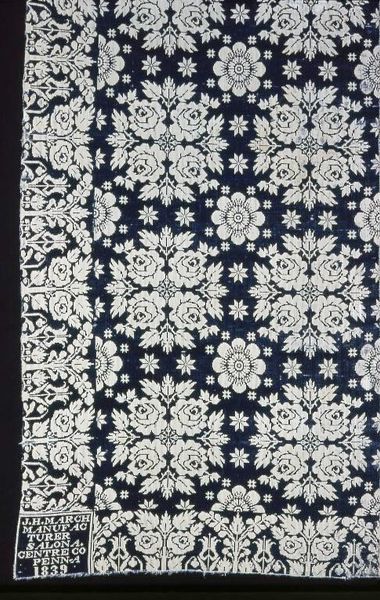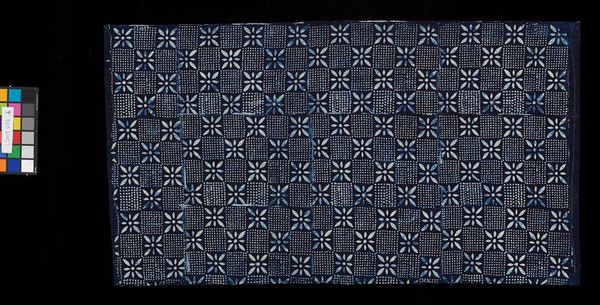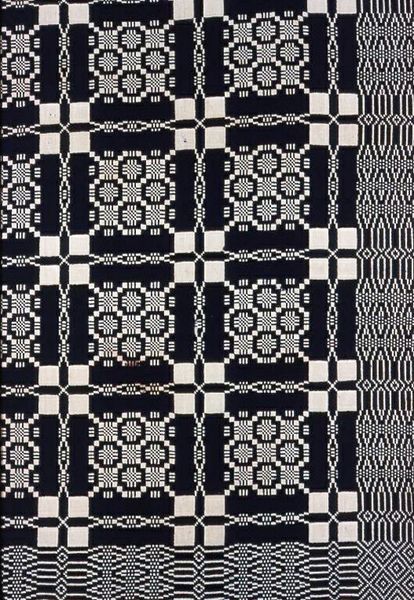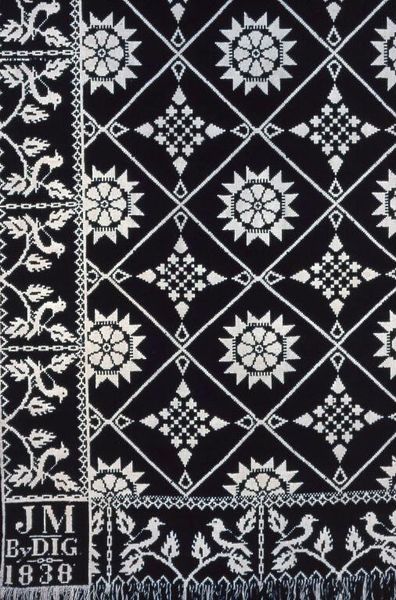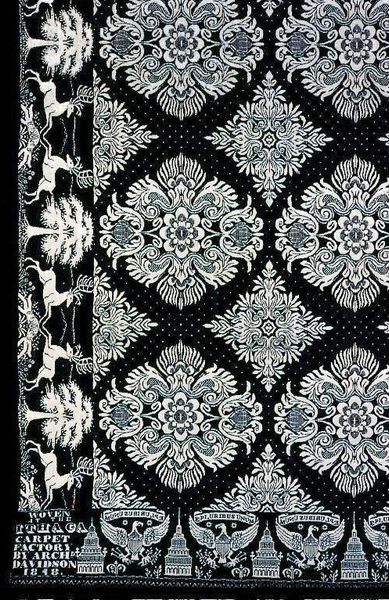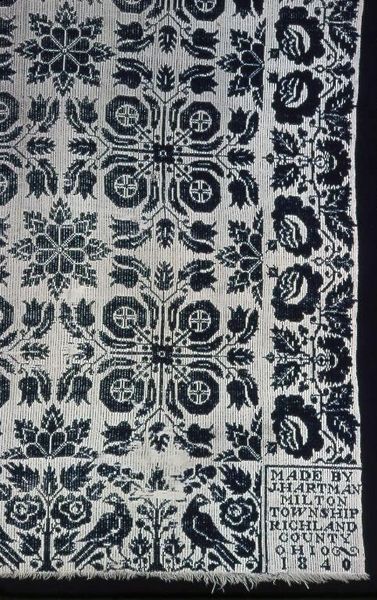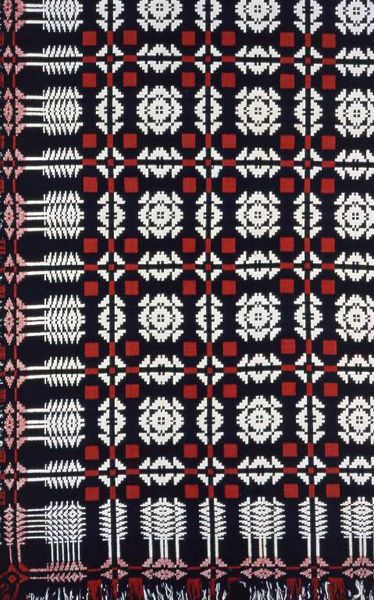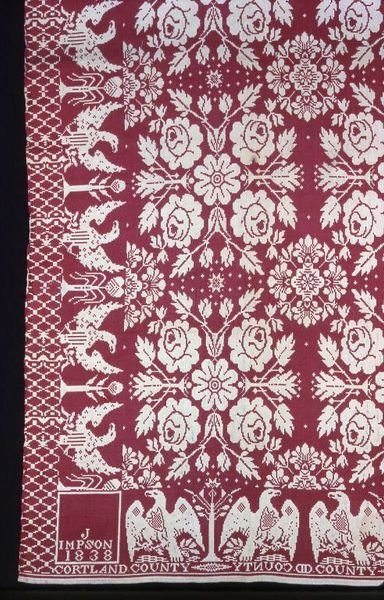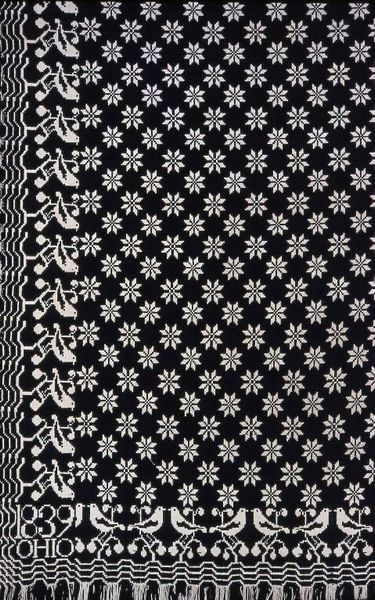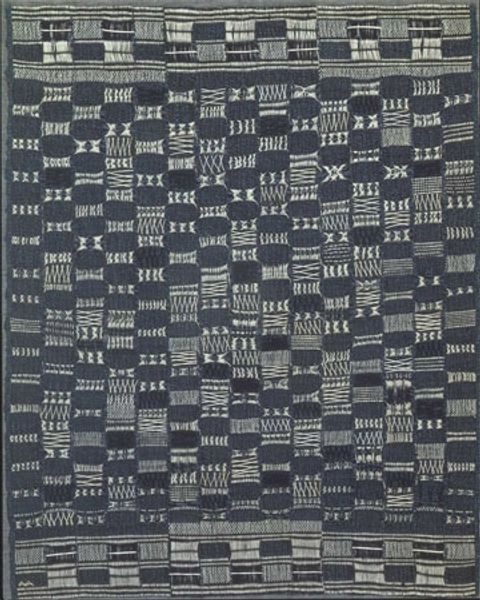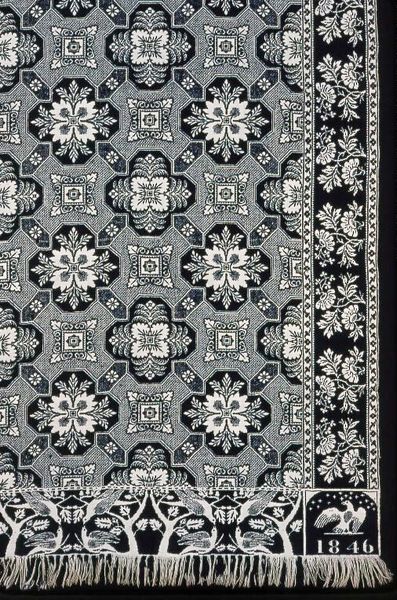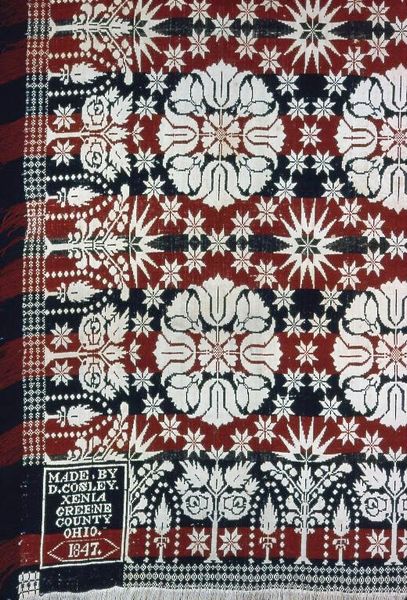
Coverlet 1880
weaving, textile
#
pattern
#
weaving
#
textile
#
geometric
#
decorative-art
Dimensions: 213.6 × 167.7 cm (84 × 66 in.) Repeat: 14 × 13.4 cm (5 1/2 × 5 3/8 in.)
Copyright: Public Domain
This coverlet with geometric patterns was woven by Sarah Scott, but we don’t know exactly when. Quilts and textiles are often overlooked in art history, but they are powerful expressions of identity and community. Looking at the coverlet’s design, we see a repeating pattern of geometric shapes. These patterns, and the indigo dye, may hint at the weaver's cultural background. Indigo dying, block printing, quilting, and weaving were common practices of enslaved Africans and African Americans. Textiles were both practical and a means of cultural expression and resistance. The production of textiles also took place in institutional settings like schools. Further research into Sarah Scott’s background might tell us more about the social conditions of its making. Objects like this coverlet help historians to understand the diverse artistic practices of a given time. We can research census records, historical societies, and online databases to find out more. The meaning of the coverlet is bound up with its specific social and institutional context.
Comments
No comments
Be the first to comment and join the conversation on the ultimate creative platform.
